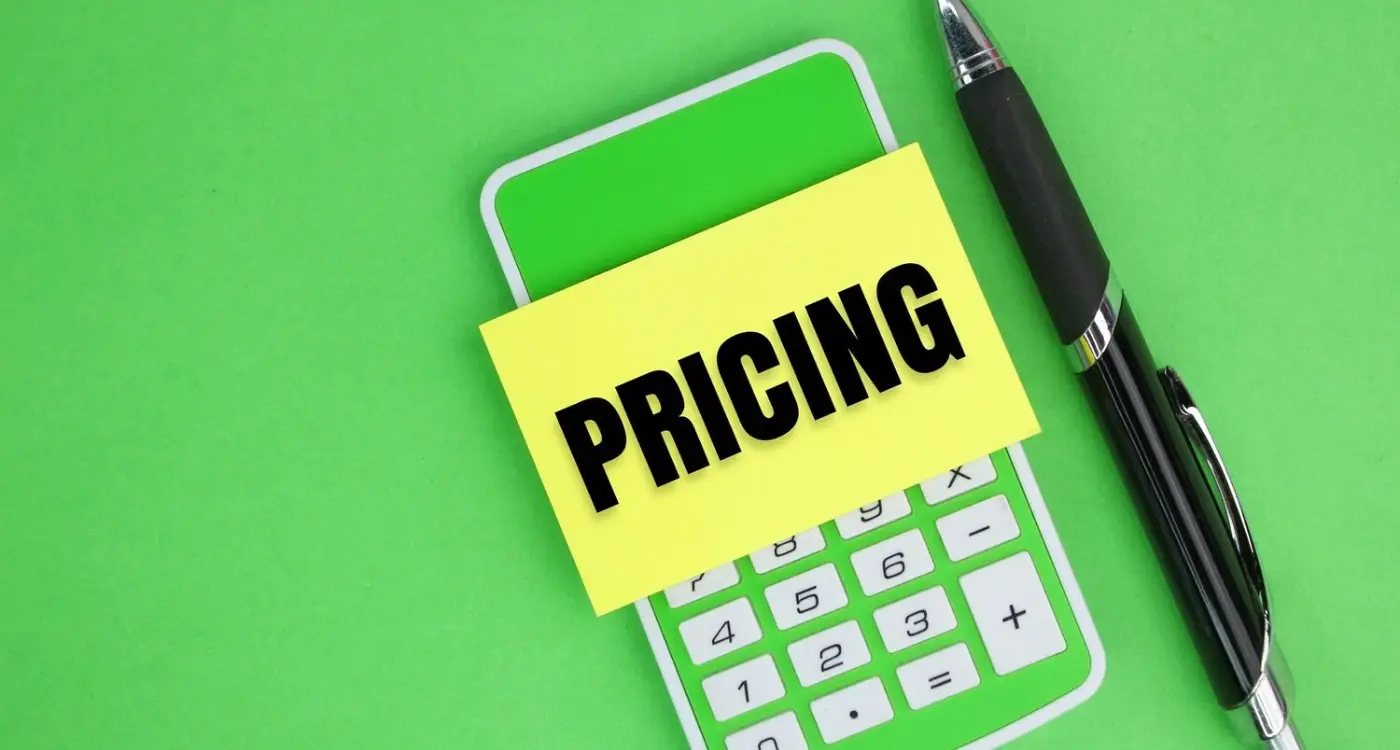How Do I Know If My App Idea Already Exists?
Every day, thousands of brilliant app ideas pop into people's heads—but here's the thing that catches most aspiring app creators off guard: nearly 95% of them already exist in some form. That doesn't mean your idea is worthless, but it does mean you need to do your homework before investing time and money into development.
The mobile app market is absolutely saturated. With millions of apps across different platforms, the chances of having a completely original idea are slim. But don't let that discourage you! Some of the most successful apps weren't the first to market—they were just better executed versions of existing concepts. WhatsApp wasn't the first messaging app, and Instagram wasn't the first photo-sharing platform.
The key isn't having a completely original idea; it's having a better solution to an existing problem
That's where proper app research comes in. Before you start sketching wireframes or contacting developers, you need to understand what's already out there. This involves thorough market research to identify competitors, intellectual property searches to avoid legal issues, and most importantly, figuring out how your app will be different and better than what already exists. This guide will walk you through each step of that process, helping you make informed decisions about your app idea's viability and potential success.
Understanding the App Research Process
Let me be honest with you—most people skip the research phase entirely when they get excited about their app idea. I've seen it happen countless times over my years in mobile development, and it usually ends badly. The research process isn't glamorous, but it's what separates successful apps from expensive failures.
Think of app research as detective work. You're gathering clues about what already exists, who your competitors might be, and where the gaps in the market are hiding. This isn't just about typing your idea into Google and calling it a day—proper research goes much deeper than that.
The Three Pillars of App Research
When I work with clients, I always break down the research process into three main areas that need investigating:
- App store analysis—checking what's already live and available to download
- Patent and trademark searches—understanding what's legally protected
- Market competition research—looking at similar solutions and business models
Each pillar tells you something different about your app's potential. Store analysis shows you the current competition; patent searches reveal what you can and can't do legally; market research helps you understand if there's actually demand for what you're building. Skip any one of these and you're flying blind.
The good news? You don't need to be a research expert to do this properly. You just need to be methodical about it.
Searching App Stores and Digital Marketplaces
Right, let's get down to business—the most obvious place to start your app research is where people actually download apps. The Apple App Store and Google Play Store are your primary hunting grounds, but don't forget about smaller marketplaces like Amazon Appstore or Samsung Galaxy Store. These platforms contain millions of apps, so you'll need a systematic approach rather than just randomly browsing.
Start by searching for keywords that describe your app idea. Don't just search once—try different combinations of words that users might type when looking for your solution. Look at the top results and scroll through several pages; sometimes the most relevant competitors aren't sitting at number one. Pay attention to app descriptions, screenshots, and user reviews as they'll give you insights into what's working and what isn't.
Beyond the Obvious Keywords
Here's where many people make mistakes during market research—they only search for direct matches. Your competition might be using completely different terminology to describe the same functionality. Try searching for the problem your app solves rather than the solution itself. If you're building a meditation app, search for "stress relief" or "sleep problems" too.
Download and test apps that seem similar to your idea. You can't properly evaluate intellectual property conflicts or market positioning from screenshots alone—you need to understand how these apps actually work.
Conducting Patent and Trademark Searches
Right, let's talk about something that makes most app developers break out in a cold sweat—patents and trademarks. I'll be honest with you, this isn't the most exciting part of app development, but it's absolutely necessary if you want to avoid legal headaches down the road.
Patents protect inventions and unique processes, whilst trademarks protect names, logos, and brand identities. For mobile apps, you're more likely to encounter trademark issues than patent ones—unless you've invented some groundbreaking technology that nobody's thought of before (which, let's face it, is pretty rare these days).
Where to Search for Patents and Trademarks
The good news is that most patent and trademark databases are free to search. Here's where you should look:
- UK Intellectual Property Office (IPO) database for UK registrations
- European Union Intellectual Property Office (EUIPO) for EU-wide protection
- World Intellectual Property Organization (WIPO) for international searches
- Google Patents for a broader, user-friendly search experience
Start with your app name and any distinctive features or processes. Search for variations and similar-sounding names too—trademark law can be quite broad in what it considers "confusingly similar". If you find potential conflicts, don't panic; it doesn't automatically mean you can't proceed, but you'll definitely want to chat with an intellectual property lawyer who can give you proper legal advice.
Analysing Market Competition and Similar Solutions
Once you've completed your initial app research and patent searches, it's time to take a proper look at what's already out there in the market. This part of your market research isn't just about finding direct competitors—it's about understanding the entire ecosystem around your app idea. I often tell clients that this stage can be quite revealing; sometimes you'll discover apps that are doing something similar but in a completely different way, which can actually spark new ideas for your own project.
Start by downloading and using apps that seem related to your concept. Don't just look at screenshots in the app store—actually use them for a few days. Pay attention to how they work, what users are saying in reviews, and what features they're missing. Look at their pricing models, how they make money, and who their target audience appears to be. This hands-on approach will give you insights that you simply can't get from browsing app store listings.
Understanding Your Competitive Landscape
Your competitive analysis should extend beyond direct competitors to include indirect ones too. If you're building a fitness app, don't just look at other fitness apps—consider how people currently solve the problem you're addressing. Are they using websites, other types of apps, or even offline solutions? Understanding this broader picture helps you position your app more effectively and identify gaps in the market that you might be able to fill.
The goal isn't to copy what others are doing, but to understand how you can do it better or differently
Document everything you find during this process. Create a simple spreadsheet listing similar apps, their key features, pricing, user ratings, and what makes them unique. This research will become invaluable when you start defining your app's unique value proposition and planning your development approach. Remember, finding similar solutions doesn't mean your idea isn't worth pursuing—it often means you've identified a real market need that people are already trying to address.
Evaluating Your App's Unique Value Proposition
After years of working with app founders, I can tell you that this is where the rubber meets the road. You've done your research, you've found similar apps, and now you're probably wondering—what makes mine different? This isn't just about features or fancy animations; it's about solving a problem in a way that nobody else is doing it.
Your unique value proposition is basically your app's superpower. It's the thing that makes people choose you over the dozens of other apps they could download instead. Maybe your fitness app tracks workouts differently, or your shopping app has a feature that saves people money in a completely new way. The key is being specific about what you do that others don't.
Finding Your Competitive Edge
Start by listing what your app does that's genuinely different—not just better, but different. Look at the gaps you found during your competitor research. Are users complaining about something in app reviews that you could fix? Is there a group of people who aren't being served well by existing solutions?
Testing Your Value Proposition
Here's the real test: can you explain your app's unique benefit in one sentence without using technical jargon? If you can't, you might need to dig deeper. Your value proposition should be clear enough that someone's nan could understand why your app matters. Remember, being different isn't enough—you need to be different in a way that actually matters to your users.
Protecting Your Intellectual Property Rights
Right, so you've done your app research and discovered your brilliant idea isn't already out there—congratulations! But before you start celebrating, we need to talk about protecting what's yours. This is where many app developers make costly mistakes that could have been avoided with some basic planning.
The first thing you'll want to do is consider trademarking your app name and logo. I can't tell you how many times I've seen developers fall in love with a name, build their entire brand around it, then discover someone else owns the trademark. It's heartbreaking and expensive to fix. A quick search on the Intellectual Property Office website will tell you if your chosen name is available—and filing a trademark application isn't as scary as it sounds.
Document everything during your development process; keep dated records of your designs, code snippets, and feature ideas as proof of creation.
What About Patents?
Here's the thing about patents—they're complicated and expensive. Most standard app features can't be patented anyway, but if you've genuinely invented something revolutionary, it might be worth exploring. Just don't expect it to be quick or cheap.
Your app's code and design are automatically protected by copyright once you create them. No registration needed. But having proper terms of service and privacy policies isn't just good practice—it's legally required in most places and protects both you and your users. If you're working with external developers, you'll also want to consider how to protect your app idea when working with remote developers.
When Similar Apps Already Exist—What to Do Next
Finding out that similar apps already exist doesn't mean you should give up on your idea. I've worked with countless clients who've discovered competitors during their research, and many of them went on to build successful apps anyway. The key is understanding that competition can actually be a good thing—it proves there's a market for your concept.
Start by studying what these existing apps do well and where they fall short. Look at their reviews, read user complaints, and identify gaps in functionality or user experience. This research becomes your roadmap for creating something better. Maybe the existing apps are too complicated, missing key features, or haven't been updated in years.
Finding Your Competitive Edge
Your next step is defining what makes your app different. This isn't about adding random features—it's about solving problems that current solutions don't address properly. Perhaps you can target a specific audience that's being overlooked, offer better pricing, or provide a more intuitive user interface.
Competition forces you to be more creative and focused. Instead of building a generic solution, you'll need to craft something that stands out. This pressure often leads to better apps that users actually want to download and use regularly. Understanding what are the main reasons mobile apps fail can help you avoid common pitfalls and create something truly valuable.
Conclusion
After working with hundreds of clients over the years, I can tell you that app research isn't just a box-ticking exercise—it's the foundation of every successful mobile app. Whether you're searching app stores, diving into patent databases, or analysing your competition, each step gives you valuable insights that could save you months of development time and thousands of pounds.
The truth is, most app ideas have been tried before in some form. But that doesn't mean your vision is worthless. What matters is how you execute it differently, what unique value you bring to the table, and how well you understand your target market. I've seen countless "me too" apps fail spectacularly, but I've also watched brilliant entrepreneurs take existing concepts and make them ten times better.
Your intellectual property research might reveal similar apps already exist—and that's perfectly fine. Use this knowledge to your advantage. Study what works, identify gaps in the market, and figure out how to do it better. Market research isn't about finding empty spaces; it's about understanding how to fill occupied spaces more effectively.
Remember, thorough app research gives you confidence in your idea and ammunition for investor pitches. It shows you've done your homework and understand the competitive landscape you're entering.
Share this
Subscribe To Our Learning Centre
You May Also Like
These Related Guides

How Do I Know If My App Idea Will Actually Make Money?

How Do I Find Out What Price Users Will Pay for My App?



